Lombardino’s | Taliesin – Transcript
– Luke: This week on Wisconsin Foodie:
[gentle music]
– Carrie: Well, Taliesin is the home of Frank Lloyd Wright, but there really is so much more to Taliesin. We think that what Frank Lloyd Wright was really doing was looking at a way to bring people together, to ask the question of “How do we live today?”
– Luke: Can you talk a little bit about the Food Artisan Immersion Program?
– Bruce: We have six students, and they rotate as far as maintaining the gardens and the work in the kitchen.
– Luke: I am so excited to be here because actually my teacher, Patrick O’Halloran of Lombardino’s, is coming in to cook a dinner on the estate today. Do you need any help?
– I don’t, I need you to go get a cocktail for yourself and enjoy the rest of the evening.
– Luke: All right, man, I can do that. Cheers.
– Yeah, cheers.
– Announcer: Wisconsin Foodie would like to thank the following underwriters.
– Introducing Organic Valley Ultra, milk with more protein, half the sugar, and no toxic pesticides. Let’s be honest, none of that healthy stuff really matters unless our kids will drink it.
[dramatic music, mom whispers “C’mon”]
[girl gulping]
[cow mooing]
– Yeah, I would drink that.
– Do you hear that? She would drink that!
[cheering, triumphant music]
– Parents are weird.
– Announcer: More protein, half the sugar. Organic Valley Ultra.
– The Dairy Farmers of Wisconsin are proud to underwrite Wisconsin Foodie, and remind you that in Wisconsin, we dream in cheese.
[crowd cheering]
Just look for our badge. It’s on everything that we make.
Employee-owned New Glarus Brewing Company has been brewing and bottling beer for their friends, only in Wisconsin, since 1993. Just a short drive from Madison, come visit Swissconsin and see where your beer’s made.
Wisconsin’s great outdoors has something for everyone. Come for the adventure, stay for the memories. Go wild in Wisconsin. To build your adventure, visit dnr.wi.gov.
From production to processing, right down to our plates, there are over 15,000 employers in Wisconsin with career opportunities to fulfill your dreams and feed the world. Hungry for more? Shape your career with these companies and others at fabwisconsin.com.
Specialty crop craft beverages use fruit grown on Wisconsin orchards and vineyards to create award-winning ciders and wines. Wisconsin’s cold climate creates characteristics and complexities that make this craft beverage unique to our state.
– Society Insurance.
Freshwater Family Farms.
Also, with the support of the Friends of PBS Wisconsin.
[upbeat music]
– We are a collection of the finest farmers, food producers, and chefs on the planet.
[upbeat music]
We are a merging of cultures and ideas, shaped by this land.
[sizzling]
We are a gathering of the waters, and together, we shape a new identity to carry us into the future.
[upbeat music]
We are storytellers. We are Wisconsin Foodie.
[upbeat music]
[crowd murmuring]
– Patrick: We get a range of emotions when people come in here. There are people that got engaged here 60 years ago. There’s people that went to college or high school right up the street who haven’t been in here in 35 years, but this is how I got involved in Lombardino’s. I started out at the Milwaukee Institute of Art and Design. I wanted to be a painter and I was subsequently working at restaurants. I started as a dishwasher, then a busboy, then I was a server, and I was realizing that I really liked the vibe of the restaurant. And then I found an opening at Shully’s Catering, which is in Thiensville, Wisconsin, and they needed a chef’s apprentice, so I ditched art school and worked for Chef Scott Shully for about eight years, and he ended up sending me to Switzerland to train in some of the same restaurants he had trained in 20 years earlier. Then from there, I traveled to Italy and kind of had, it’s been a love story with Italy ever since.
We’re gonna get some flames here.
[fire whooshing]
I moved from Milwaukee with my ex-wife and we were in a deal to be the working partners, junior partners at an all-day breakfast, lunch, and dinner bistro. At the last second when we were going to sign the papers, the woman who was selling us the business backed out because her spiritual advisor told her it was not in the cards. And right after that happened, within minutes, a friend called and said, “Well, there’s an old Italian place “that just put a for sale sign up in the window.” So we drove immediately the same afternoon over here, had a cocktail, looked at this old place that was just, had some beautiful guts. So we tried to restore it faithfully to this 1950s kitschy spaghetti house vibe that it’s always had, but what we have done is update the food, and we have kind of transitioned it away from being an immigrant Italian-American kind of cuisine towards more of a contemporary seasonal cuisine using a lot of local farmers. So we’ve adapted our own recipes that fit the upper Midwest and what a Wisconsin palate might enjoy.
So, over the 20 years we’ve been here, I’ve had multiple cooks leave and then open their own businesses. Lynn Chisholm, who went to Elkhart Lake and started The Paddock Club, we have, of course, Luke with The Driftless Caf, so that’s a great feeling when you see people mature and then they come back, and we’re able to maintain our relationships, and it’s really rewarding when you have the time to step back and look back at, you know, the legacy that you’ve created here.
– Patrick!
– Luke, welcome home!
– Thank you, it’s good to be here, man, it’s really good to be here.
– We just fired up the wood-burning grill and been waiting for you to show up and get back to your old station.
[laughing]
– Thanks for holding it for me, I appreciate that. What are we gonna do today, man?
– Patrick: We’re gonna do some cooking today, getting ready for our dinner at Taliesin. We got contacted by the Taliesin Preservation Society through a relationship that I have with one of their chefs, Bruce Evans, who I had worked with at my very first job at Shully’s Catering. And I just think Frank Lloyd Wright is such an enigmatic Wisconsinite, and we’re just really thrilled to be cooking up on a hill, overlooking this majestic site of the Taliesin estate.
So we’re gonna take what we do here, our wood-burning cooking, and transport it out there. It’ll be kind of like I said, a melding of how Italians would cook if they lived in Wisconsin.
– That’s great, I mean that’s kind of been like the blueprint of how you taught me how to cook. Well, let’s get started. All right, what do we got?
– Well, we’re gonna work on a Mediterranean seafood salad.
– Luke: Mm-hmm, okay.
– So we’re serving it as a cold salad, so we’re gonna be outdoors, something refreshing on a hot day.
– Yep.
– And we’re gonna go with some Mediterranean ingredients. We’re gonna poach some petite Spanish octopus, we have the shrimp from the Gulf, and then we have this Wisconsin whitefish, skin on, we’re gonna cook it over the hickory fire and give it a little perfume of the smoke.
– That sounds awesome. Is it cool if I load a little more wood into this thing to make sure that it gets crispy?
– Sure, you know what you’re doing.
– Luke: All right, well I don’t know about that.
[laughing]
Let’s towel up here. This is like walking into a memory. I spent a lot of time in this corner, learning how to cook and learning how to be a restaurateur. As chefs, memories are our best ingredient.
[gentle music]
When did you bring this in?
– Patrick: In 2001, we took a long trip to Italy and we encountered this kind of rustic cooking. Immediately it clicked, “I have to bring this back to Madison.” And we still, to this day, have people coming in who’ve never tried our steaks or our chops and they’re blown away, but it’s really this tool doing a lot of the work for us.
– All right, so what we’re looking for here on the wood-burning grill, right around the edges, you’re seeing a little bit of that, that’s showing you that that fish is cooking pretty well, but I’m looking for this to lift up, just like this right here, and what that kind of guarantees for me is that this isn’t actually sticking right now.
How do we finish this now, Patrick?
– So we’ve let these iron grates do their job, so we’ve captured the smoke, we’ve crisped the skin. Now we’re gonna transfer it to a pan and finish it in an oven so that the flesh in the interior is super moist and delicious, it flakes apart, and will be great in our salad. Next, we’re gonna poach some of this seafood that’s also gonna go into the salad. We’re gonna start with this little octopus right here. I’m gonna drop it in here, and what I’m gonna do is I’m gonna shock it.
– Okay.
– I’m just gonna drop it in three times. And what this does is it helps the skin to stay on during the long braise. So now I’m gonna lower the heat down very low, and then I’m just gonna push it back in the back and let it braise for about one hour until it’s very tender. The next step is to poach the shrimp we have here. These, again, I have some water here, just straight water, I’m gonna add some coarse Kosher salt. There’s a few bay leaves in there, again, a little bit of fresh thyme, we’re reinforcing that flavor. But you can see the color has changed dramatically, and when you touch it, using all your senses here, it’s firming up really nicely. But I know that it needs just a little bit more to get cooked through at the core.
– Sure.
– But I wanna stop that cooking, and we’ll plunge these poached shrimp directly into the ice water, and that will stop the cooking.
– Luke: Yep.
– Patrick: And lock them in just at the right moment.
– Luke: What’s next?
– And we’re gonna make our salad based on these cannellini beans, and the way we did this is we cooked these in unseasoned water because that will toughen the skin of the bean. When we find that our beans are tender and they’re to our liking, we kill the heat, add a little more olive oil, and then we season that water. And then overnight, the beans soak up the seasoning. And then you’ll see this liquid that they’ve cooked in is really rich with olive oil, and now it’s seasoned, and that’s gonna be part of the vinegarette with some good apple cider vinegar and some chilies that makes the salad pop.
So these are the Oaxacan chili, it’s a Pasilla chili.
– Wow. And they smoke them over a live fire, so it kind of plays into what we’re doing with our fish. It’s gonna add another depth of flavor. So give that a try.
– Wow.
– It’s smoky, but it’s taken the edge off with that pickling and again, some of this brine will go into the salad.
– I love it because it’s darker then you would expect. You know, usually with pickles, you’d think bright, this is, uh,–
– It’s chocolatey. Yeah, it’s chocolatey, right. You get that kind of bitter note, you get that sweetness.
– And all of this is gonna add up with our mint from our own garden and our Wisconsin whitefish. So I have this collision of basic Italian and what I think is delicious, and it’s kind of evolved into our own style.
[upbeat acoustic guitar music]
So we are ready to start assembling this salad. I’m gonna have you go ahead and flake this beautiful fish, seeing as you cooked it, you’re responsible for it.
[Luke laughing]
so you can go ahead and do that.
– Okay.
– I’m gonna take these shrimp that we poached, add them in. So we’re flaking up the whitefish, I have this Texas shrimp, I have this Spanish octopus, so we’re layering this all in. In addition to that, I’m gonna add these beans that we cooked, and I want some of their cooking liquid.
– Yeah.
– Because that is also has a gelatinous quality, and we cook it with a lot of olive oil. Why don’t you add that whitefish in, and you can see as we’re building it, the color of the shrimp, the color of the onion, and now we’re adding that smokiness.
– Luke: Mm-hmm.
– We’re gonna reinforce that smokiness, so now we’re adding more flecks of color, more depth of flavor. The finishing touches on here are gonna be that local parsley, but I think this is the thing that really makes the dish.
– Luke: Yeah.
[laughing]
– Fresh mint. And we have a patch of mint that grows outside the restaurant.
– Yeah.
– And we just devastate it throughout the summer. It’s very unexpected for people.
– Yes. Patrick, I’m so excited to be in here with you today and like, just see you again, man. It’s always a pleasure, and I appreciate the opportunity.
[gentle acoustic guitar music]
– Carrie: Taliesin is the home of Frank Lloyd Wright. He lived here for over 50 years of his life, but there really is so much more to Taliesin. It’s farm, it’s land, it’s nature, it’s the arts, it’s where community comes and is celebrated. What we’re trying to do here at Taliesin Preservation is really expand opportunities for people to engage, again, getting beyond just its architecture, it’s Frank Lloyd Wright’s home, but really this was Frank Lloyd Wright’s laboratory, where he would come and he would experiment because we think that what Frank Lloyd Wright was really doing was looking at a way to bring people together, to ask the question of “How do we live today?”
Frank Lloyd Wright was very much a person where he thought that, you know, it’s not good enough just to know architecture. That to be a well-rounded individual, you need to know how to cook, how to play an instrument, how to be aware of the fine arts. He had an idea and a concept that people could be small, practical farmers. So food very much was a part of Taliesin, and then we, as the Frank Lloyd Wright Visitor Center, now also host a restaurant and allows students to come from around the world. They learn, they cook, they serve our guests. We have a kitchen garden, they’re very much growing the produce, really getting a full education, which is what Wright was trying to do as well.
[upbeat guitar music]
– Luke: Bruce!
– Luke.
– Luke: How’s it going?
– Great, how are you?
– Good, thanks for having me out.
– Oh, welcome to the Riverview Terrace.
– Luke: This is impressive!
– Bruce: This is the only restaurant that Wright had ever designed. And this whole area was supposed to be the gateway to Taliesin.
– Did Wright actually eat here, well, like, was this his joint that he designed for himself?
– Unfortunately, he didn’t see its completion, but this is his final project.
– So, can you walk me through the place a little bit?
– Oh, I’d love to.
– You know I love to see a kitchen.
– I would love to.
– Great!
– So this is it!
– This is the kitchen.
– Nice.
– Bruce: This is where it all starts as far as food for our restaurant, our catering events, as well as some of the lunches we do for our architectural camps.
– Luke: How many people do you usually serve?
– Bruce: Anywhere between 100 to 150, and we’re only open for lunch so that’s a, you know, a small window, but students are doing some incredible, incredible food.
– Can you talk a little bit about the Food Artisan Immersion Program, ’cause I know that that’s a big deal here.
– That’s a huge deal here.
– Okay. Odessa Piper was the brains behind this, and she saw Taliesin as the perfect opportunity to bring in culinary along with agriculture. Again, with Wright’s philosophy that everybody does everything. We have six students, some of them start the full season that takes them from May all the way through the end of October, so they can see the full growing season, and they rotate as far as maintaining the gardens and working in the line here. Working the kitchen is just incredible.
– It sounds like it’s cultivating that Midwestern identity and being able to serve people around us. I do have some questions though, like, I kind of want to see where this food comes from. You think it’s okay if we walk through the garden?
– Definitely, let’s tiptoe through the tulips.
– All right, I’ll follow you, here we go.
[soft guitar music]
Well, this is picturesque if nothing.
– Oh, it’s beautiful here. And we have our little piece here, but the majority of this, the 600 acres out of the 800 acres is operated by Otter Creek Organic Farms, which is owned and operated by Gary Zimmer.
– Luke: So this is the garden? Let’s walk through it.
– This is the student garden, yes, and this is designed by the students along with our landscape manager, Alex.
– Luke: Okay.
– Bruce: And they designed it based on last year’s use, as well as things that we want to play with this year. And what we’ll do is we’ll have the students harvest, they’ll bring the things in, and it’s just like, “Wow, this is what we get to play with now.”
– Luke: I suppose for an instructor that’s kind of, that’s a dream job, right?
– Bruce: Exactly.
– Luke: I am so excited to be here because actually my teacher, Patrick O’Halloran of Lombardino’s, is coming in to cook a dinner on the estate today.
– Bruce: Yes, he is.
– Luke: I wanna grab some stuff out of the garden for him that we could maybe take out and just kind of throw it at him, see if it works within his menu.
– Bruce: We should.
– Luke: Okay, cool, let’s do it.
– The table is set for tonight’s farm dinner, and we’re in one of the most idyllic places in all of Wisconsin. I can smell the farm, and I can smell the grill. Let’s go check in with Patrick and see if he needs any help.
– Woman in background: Want me to come get it?
[soft guitar music]
– Luke: Sir!
– Luke, how are you?
– I’m great, how are you?
– I’m great.
– Awesome. It smells amazing.
– Patrick: This is just what’s in season right now. So tonight, we’re doing a very rustic dinner with some Spanish, Mediterranean, Italian influences. We’re taking advantage of everything over a wood-burning fire. It’s a nice, warm, summer Wisconsin day, so we’re doing a lot of cool salads, some great cheese from Landmark Creamery, Anabasque cheese, so a Spanish-style cheese, and then some Wisconsin whitefish flaked into this chilled salad, a good way to bring seafood to the dinner.
– What does it mean to cook here?
– It’s a real honor. I got connected with this dinner here at Taliesin through Bruce Evans, and he’s someone that I worked with when I very first started cooking over 30 years ago. He was a big person in my development as a chef, and it’s just an amazing experience. You’re standing, looking out at the house, Taliesin, Frank Lloyd Wright’s home, and the farm that’s on the property, and then we’re working with some of the things that are grown right here on the estate. Some of the great things from the Dane County Farmers’ Market. All kinds of local pork also from the Driftless region and Enos Farm, and we’re also being assisted by the students here from the Taliesin Food Arts Immersion Program, and we’re just really excited to be here.
– I love it, do you need any help?
– I don’t, I need you to go get a cocktail for yourself and enjoy the rest of the evening.
– All right, man, I can do that.
– Thank you, brother.
– Yeah, thank you. Good to see you.
– Good to see you.
[soft guitar music]
– Hey, Luke, I’m Aron, welcome to Taliesin.
– Nice to meet you. What building is this?
– This is the Hillside Home School, the School of Architecture at Taliesin resides here.
– Can we take a look inside?
– Yeah, absolutely.
– Great.
– Come with me.
– Thanks.
[soft dulcimer music]
Wow.
Aron, this is breathtaking.
– Yeah, it is, this is–
– What is this room?
– This is the Hillside Assembly Hall. This is the building that Wright designed for his aunt’s co-educational boarding school. This is where Wright broke the box, so to speak, from Victorian architecture, so he has floor to ceiling glass windows. He’s opened the space, put the masses at the corners, and integrated his family motifs.
[footsteps ringing]
– Luke: Wow, what room is this?
– Aron: This is the drafting studio that Wright built for the fellowship, and now the School of Architecture at Taliesin comes here every summer.
– I mean, this is actually one of the most unusual large spaces I’ve ever seen.
– Aron: Yeah, Wright called it the Abstract Forest so that the light dabbles through the drafting boards all day long.
[soft music]
So, Luke, there’s something else that you should probably see before you head out.
– “Why I love Wisconsin.”
“I love Wisconsin because of every sincere forward-looking experiment the State itself has ever made. Wisconsin barns are mostly all red and everywhere make a feature of the landscape missing in most states. A farmstead here is somehow warmed and given life by the red of the barns as they stand about me over the green hills and among the yellow fields with the sun on them. I love her because she has so few highbrows.
“They are men educated far beyond their capacity. “So my old master Louis Sullivan used to say.
“And I love her because most of her “was for the temperance of the Declaration of Independence “instead of prohibition that violates temperance.”
Frank gets it.
I get it, too.
Let’s get some dinner.
[upbeat music]
[crowd murmuring]
[glasses clinking]
So the concept of this meal is family-style, and would actually use the word rustic. Rustic I think is no more than a reference to finding the best ingredients possible in the height of their season, and putting them together. We have the cannellini bean salad, we have the mixed grill with the Fraboni’s Italian sausage, some pork loins, some braised pork with a strawberry vinegarette. This lamb from Pinn-Oak Farms in Delavan, Wisconsin. We have a string bean salad, we have fried potatoes, and a green salad. Let’s give it a taste.
[upbeat acoustic music]
Fraboni’s Italian sausage is one of those flavors that’s just cemented in my memory. And I have to say the fennel seed, the little bit of spice, the richness, it’s beautiful.
That Enos Farm pork loin, really succulent, very, very rich. It’s been brined, grilled, and has elements of smokiness that really kind of offset the sweetness of the strawberries. And I love seeing and tasting it on these plates.
This chilled cannellini bean salad has all the elements for a perfect summer dish.
You get a little bit of that heat there, but the richness of the seafood and the creaminess of the beans kind of balance it all out. Anyone can cook a piece of meat, but to be able to cook something that is delicate and nuanced, and put it together with ingredients that aren’t boring, that aren’t mundane,
that’s the hallmark of a true great.
[crowd murmuring]
The alchemy in this dish kind of captures the essence of Lombardino’s.
[crowd applauding]
And I know for me, it’s what introduced me to this idea of using the ingredients around me as an interpretation. All these flavors married perfectly together, and they just accent this feeling of conversation and community that everyone at the table is sharing, and I actually think that’s exactly what Wright had in mind when he designed a lot of his places. He took structural elements and combined them with organic elements, which defines a storied tradition here with the Taliesin estate. On that note, anyone mind raising a glass to Patrick O’Halloran and Lombardino’s Restaurant?
[glasses clinking]
– Nice job, woo! Cheers!
[crowd murmuring]
[gentle acoustic music]
[laughing]
– Did you hear the one about the bear that walked into a bar?
[laughing]
Seriously. Bear walks into a bar, looks at the bartender and says, “Hey, bartender, what’s the deal with ah…”
[laughing]
Bartender looks at the bear and says, “Hey, what’s with the big pause?”
– Woman: Oh!
[laughing]
All right!
– Eh.
– I just had to get that one out. I’m sorry, Ryan, you’re doing great.
– Announcer: Wisconsin Foodie would like to thank the following underwriters.
– Introducing Organic Valley Ultra, milk with more protein, half the sugar, and no toxic pesticides. Let’s be honest, none of that healthy stuff really matters unless our kids will drink it.
[dramatic music, mom whispers “C’mon”]
[girl gulping]
[cow mooing]
– Yeah, I would drink that.
– Do you hear that? She would drink that!
[cheering, triumphant music]
– Parents are weird.
– More protein, half the sugar. Organic Valley Ultra.
– The dairy farmers of Wisconsin are proud to underwrite Wisconsin Foodie, and remind you that, in Wisconsin, we dream in cheese.
[crowd cheering]
Just look for our badge. It’s on everything we make.
Employee-owned New Glarus Brewing Company has been brewing and bottling beer for their friends, only in Wisconsin, since 1993.
Just a short drive from Madison, come visit Swissconsin and see where your beer’s made.
– Wisconsin’s great outdoors has something for everyone. Come for the adventure, stay for the memories. Go wild in Wisconsin. To build your adventure, visit dnr.wi.gov.
From production to processing, right down to our plates, there are over 15,000 employers in Wisconsin with career opportunities to fulfill your dreams and feed the world. Hungry for more? Shape your career with these companies and others at fabwisconsin.com.
Specialty crop craft beverages use fruit grown on Wisconsin orchards and vineyards to create award-winning ciders and wines. Wisconsin’s cold climate creates characteristics and complexities that make this craft beverage unique to our state.
– Society Insurance.
Freshwater Family Farms.
- Henry & Sons Bourbon.
Something Special from Wisconsin.
Marcus Hotels and Resorts.
Central Wisconsin Craft Collective.
91.7 WMSE.
Edible Milwaukee magazine.
Also, with the support of the Friends of PBS Wisconsin.
For more information about upcoming Wisconsin Foodie special events and dinners, please go to wisconsinfoodie.com.
Still hungry for more? Get connected on Facebook and Instagram and also make sure to subscribe to our YouTube channel, where you’ll find past episodes and special segments.
[upbeat music]
Search Episodes
Related Stories from PBS Wisconsin's Blog

Donate to sign up. Activate and sign in to Passport. It's that easy to help PBS Wisconsin serve your community through media that educates, inspires, and entertains.
Make your membership gift today
Only for new users: Activate Passport using your code or email address
Already a member?
Look up my account
Need some help? Go to FAQ or visit PBS Passport Help
Need help accessing PBS Wisconsin anywhere?

Online Access | Platform & Device Access | Cable or Satellite Access | Over-The-Air Access
Visit Access Guide
Need help accessing PBS Wisconsin anywhere?

Visit Our
Live TV Access Guide
Online AccessPlatform & Device Access
Cable or Satellite Access
Over-The-Air Access
Visit Access Guide
 Passport
Passport


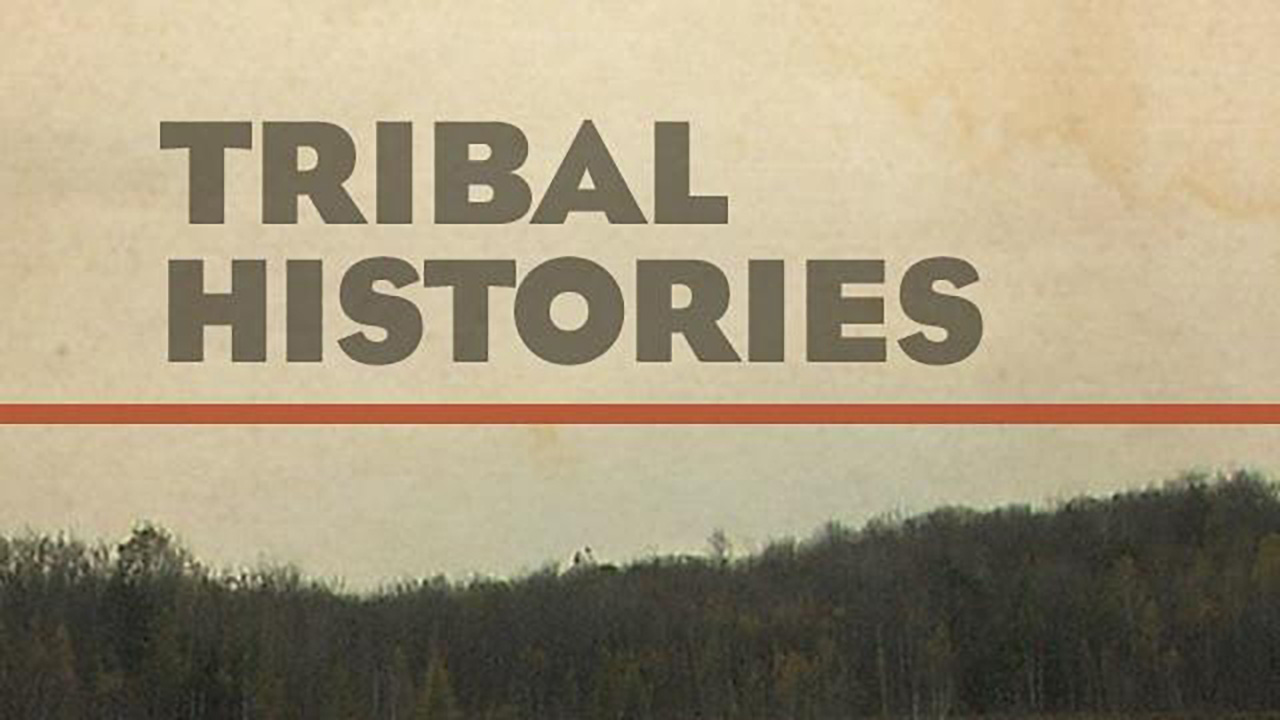
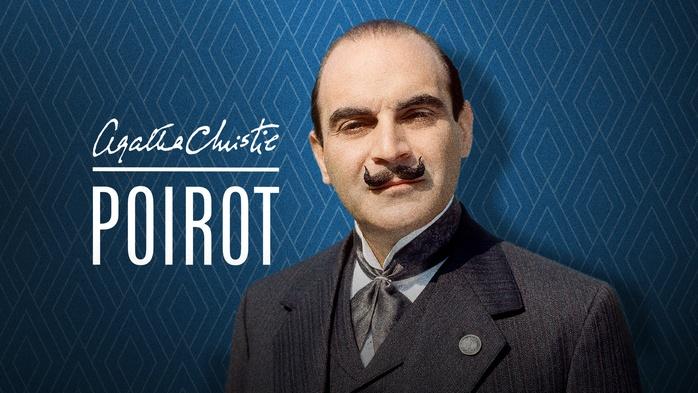


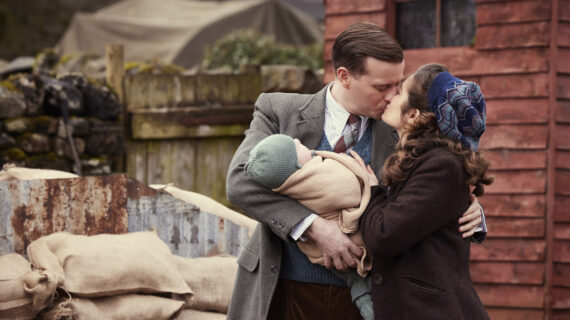

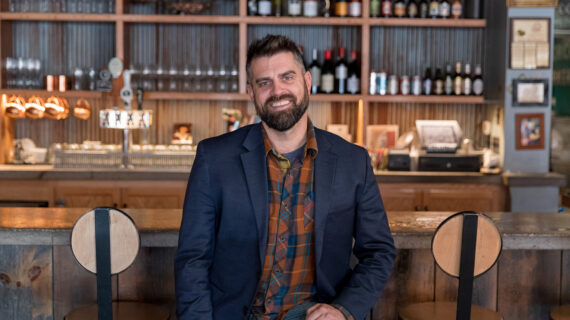
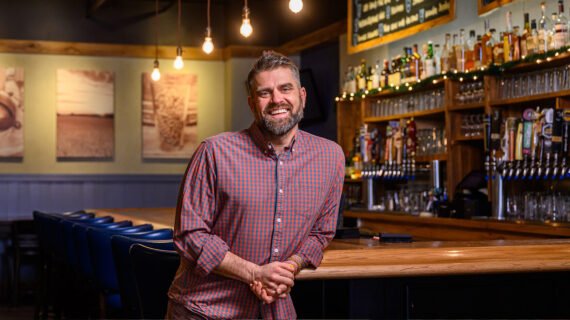
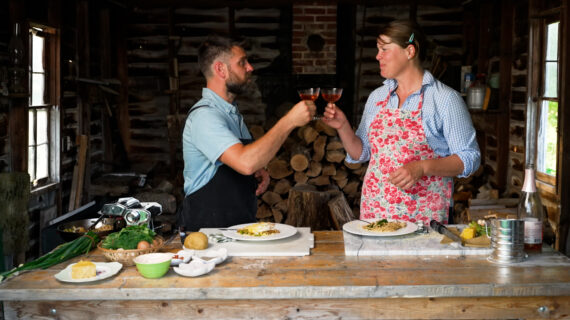
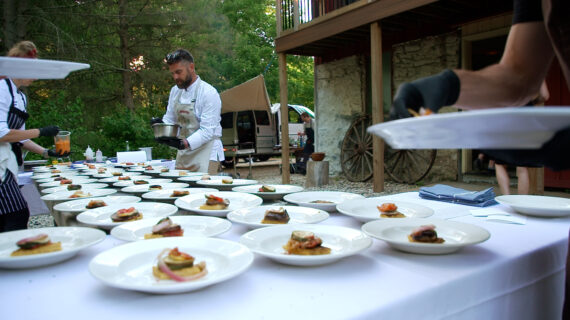
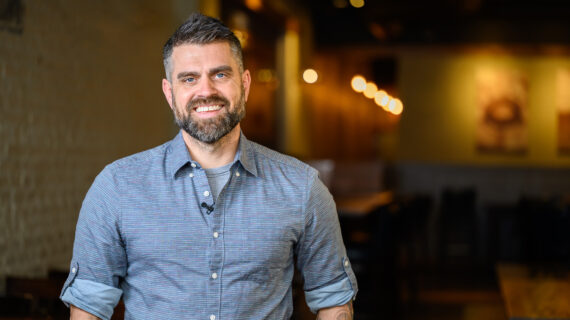
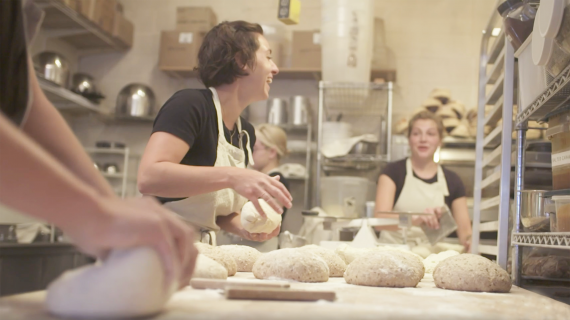


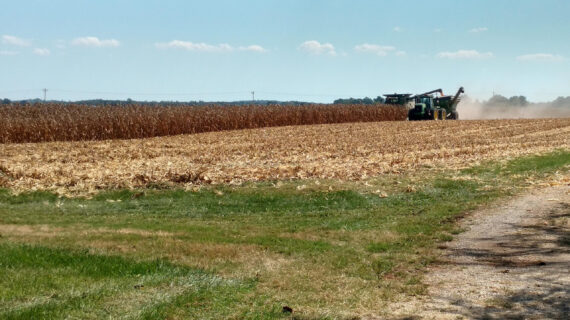

Follow Us